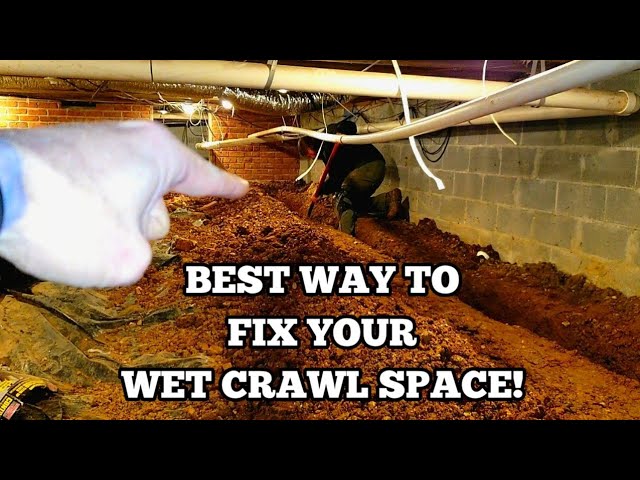What is a damp or water-damaged crawl space?
A damp or water-damaged crawl space is a type of space in the home that is often overlooked when it comes to maintenance and repairs. Crawl spaces are often located in basements, attics, or other low-lying areas of the home and are typically not well-ventilated or insulated. The dampness and water damage that can occur in these spaces can lead to a variety of issues, such as mold growth, wood rot, and insect infestations.
What causes a damp or water-damaged crawl space?
There are several factors that can contribute to a damp or water-damaged crawl space. Poor drainage, plumbing leaks, and inadequate ventilation are all common causes of dampness and water damage in crawl spaces. In addition, the ground around the home may be too wet or the home may be located in a flood zone. These conditions can lead to water entering the crawl space, which can then cause dampness and water damage.
What are the risks of having a damp or water-damaged crawl space?
Having a damp or water-damaged crawl space can lead to a variety of risks and problems. Mold growth is one of the most common risks associated with damp crawl spaces. Mold can cause health problems, including respiratory issues, skin irritations, and allergic reactions. In addition, wood rot and insect infestations can occur in damp crawl spaces, which can lead to structural damage to the home.
How can a damp or water-damaged crawl space be fixed?
The first step in fixing a damp or water-damaged crawl space is to identify and address the source of the water. This may involve repairing plumbing leaks, improving drainage, or installing a sump pump. Once the source of the water has been identified and addressed, the crawl space should be thoroughly dried out and ventilated.
Installing a vapor barrier
Once the crawl space has been dried out and ventilated, a vapor barrier should be installed. A vapor barrier is a layer of plastic or other material that is installed on the floor of the crawl space. The vapor barrier helps to prevent moisture from entering the crawl space and helps to keep the area dry.
Adding insulation
Insulating the crawl space can also help to reduce the risk of dampness and water damage. Insulation helps to keep the area warm in the winter and cool in the summer, which can help to reduce the risk of moisture entering the space.
Regular maintenance
Finally, it is important to regularly inspect the crawl space for signs of water damage or dampness. Regular maintenance and repairs can help to reduce the risk of water damage and dampness in the crawl space.
Conclusion
Having a damp or water-damaged crawl space can lead to a variety of problems, including mold growth, wood rot, and insect infestations. In order to reduce the risk of these issues, it is important to identify and address the source of the water, install a vapor barrier, add insulation, and regularly inspect the crawl space. By taking these steps, homeowners can help to protect their homes from the risks of dampness and water damage.









